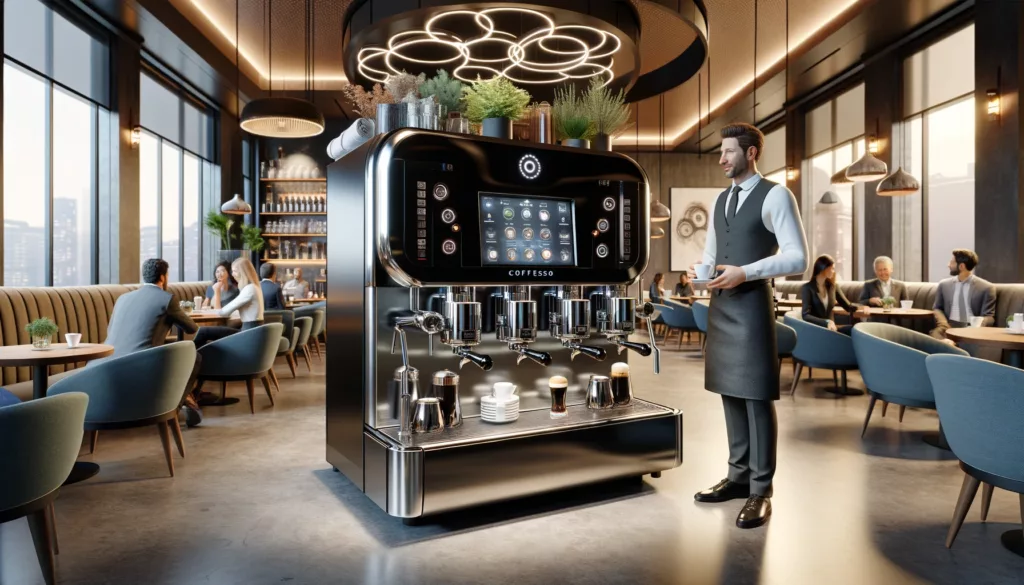Picture this: a small cup filled with a rich, aromatic coffee topped with a layer of creamy foam the very essence of espresso. This isn’t just a beverage; it’s a global phenomenon and an art form, steeped in history and enjoyed by millions every day. Today, I’m going to be talking about the intricate world of espresso, from its illustrious past to the diverse methods of crafting the perfect shot.
You’re going to find out about the importance of its origins, the meticulous brewing process that goes into making each cup, and the various types of espresso machines that have contributed to the global espresso culture. Whether you’re a coffee aficionado or a curious newcomer, understanding these elements is crucial to appreciating this beloved drink fully.
This journey isn’t just about the sensory delight of sipping espresso; it’s also about the people, places, and innovations that have made espresso what it is today. So, if you want to explore the richness and depth of this coffee powerhouse, stick with me. I’m here to help you with every step, from bean to cup, diving headfirst into the vibrant world of espresso.
The Birth of Espresso: Tracing its Historical Roots
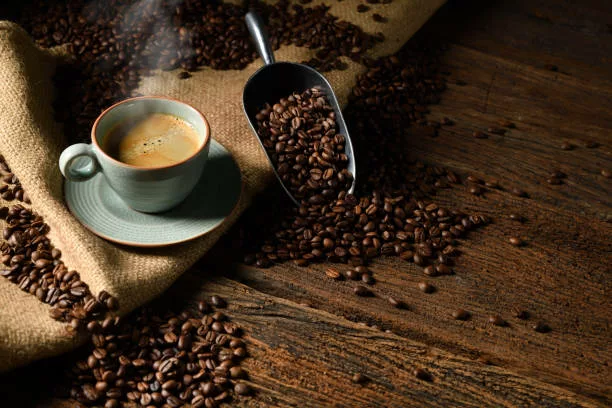
You might sip on an espresso to kick-start your morning, but have you ever pondered where this potent brew originated? The story of espresso starts in Italy during the early 20th century. It wasn’t just about creating a quick cup of coffee; it was about ingenuity and the Italian passion for perfection in a cup.
The term ‘espresso’ comes from the Italian word ‘esprimere’ which means ‘to express or ‘to press out’. This is a nod to both the speed of the coffee’s preparation and the machine that famously forces water through finely-ground coffee beans. The espresso machine was patented by Luigi Bezzera in 1901, who sought to shorten the coffee break of factory workers without sacrificing the quality and taste of the coffee.
Over time, espresso became interwoven with Italian culture, becoming a daily ritual and a proud symbol of Italian craftsmanship. The method spread throughout Europe and eventually the world, giving rise to countless variations and a global love affair with this intense, flavorful coffee.
Recognizing the pivotal role of espresso in coffee culture also illuminates the variety of ways people have come to enjoy it. From ristrettos to lattes, espresso forms the heartbeat of a myriad of coffee drinks. Moving beyond Italy, different countries have adopted and adapted the tradition, each adding their own spin to the iconic espresso shot.
The Art of Espresso: Delving into the Brewing Process
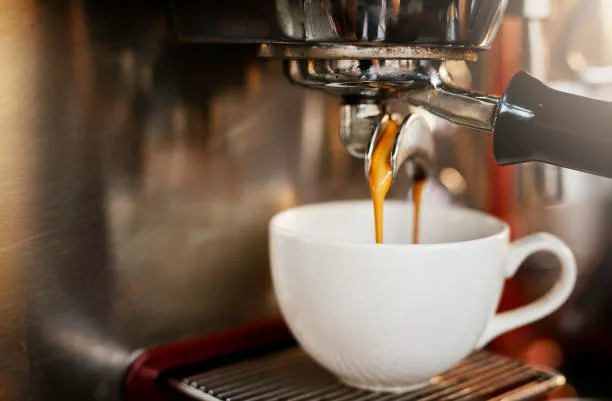
You’re going to find out about the intricate dance that is brewing a perfect espresso shot. It’s not just tossing grounds into a machine; it’s a ritual that balances grind, temperature, and timing to perfection.
The brewing process begins with grinding coffee beans to a fine consistency similar to table salt. This fine grind exposes more surface area to water, which is essential for the short brew time of espresso.
Next, the grounds are tamped down with just the right amount of pressure to create a puck through which hot water will be forced. Consistency in tamping is key to avoiding an uneven extraction of the coffee.
Water temperature is another critical factor; water that’s too hot or too cold can ruin an otherwise perfect espresso. The ideal temperature hovers around 200 degrees Fahrenheit (93 degrees Celsius).
A good espresso is all about timing. The hot water should pass through the grounds within 25 to 30 seconds, resulting in a 1-ounce shot of rich, concentrated coffee topped with a layer of crema – the golden, creamy froth that marks a quality espresso.
Now, why does this matter? Because the brewing process is at the heart of what makes espresso unique. Its robust flavor, intense aroma, and layered complexity are a result of this meticulous process.
But don’t worry too much about mastering all the nuances on your first attempt. Espresso brewing is a learned skill, and there’s always room to tweak and refine your technique. And that’s the adventure, isn’t it?
Next up, we’ll transition from the process to the hardware. There’s a lot of opportunity in choosing the right machine for your espresso needs. Whether you go manual or automatic, each machine brings its own personality to the brewing ritual.
related article in JustAnotherCuppaCoffee.com
We use the Shardor Coffee Grinder For all our coffee grinding and I think its why our Vietnamese Coffee Is Best.
Read Our 10 Reasons You Should Be Using The Shardor Coffee Grinder right here!

The Art of Espresso: Delving into the Brewing Process
I’m going to take you through the enthralling world of espresso brewing, and trust me, it’s going to include a lot more than just pressing a button. This is where the magic happens. The brewing process of espresso is an art form, combining science and skill to create a rich, bold cup of coffee with a distinctive crema that espresso lovers yearn for.
Now what is this process all about? It starts with finely ground coffee that’s tightly packed into a portafilter. Hot water, around 90-96 degrees Celsius, is then forced through the ground coffee under high pressure, usually about 9 bars, extracted over approximately 25-30 seconds. The result? A concentrated shot of coffee that packs a punch in both flavor and aroma. Don’t forget the golden rule: the quality of the water and the coffee beans are pivotal – they can make or break your shot.
It’s not just about the technicalities; it’s also about the human touch. A barista’s expertise is crucial. They adjust the grind, tamper pressure, and extraction time to achieve that perfect espresso with a balance of sweetness, acidity, and bitterness. You could say the barista is both the maestro and the artist in this performance.
Now, as we move into exploring the machines that make this all possible, personally, I’m going to remind you – no machine can compensate for low-quality beans or improper technique. The best espresso requires not just a good machine, but also a dedicated barista.
The Classic Approach: Exploring Manual Espresso Machines
I’m going to dive right into the world of manual espresso machines. These are the tools for the purists and those who cherish the hands-on approach. Manual machines, also known as lever machines, are about as old-school as you can get in the espresso game. But don’t let the term ‘old-school’ fool you; they’re coveted for their simplicity and the control they afford in the espresso-making process.
When you’re working with a manual espresso machine, you’re the maestro. You dictate the pre-infusion time, the pressure, and ultimately, the extraction rate. This precision allows you to fine-tune your shot to perfection. However, this isn’t just about romanticizing tradition; it’s also about skill. It takes practice to nail the technique, much like a craftsman perfecting their art.
Choose something that resonates with you – whether it’s a modern design or a vintage piece, manual espresso machines can be both aesthetically pleasing and functional. The key elements to consider include the build quality, the pressure you can generate, and the temperature stability. And while you’ll get a phenomenal cup of espresso, be prepared for a workout, especially with models that require a more vigorous pull on the lever.
The beauty of a manual espresso machine is in the ceremony of making the beverage. It’s a meditative process that makes the final cup all the more rewarding. If you want to immerse yourself in the espresso-making ritual, a manual machine might just be your ticket to coffee nirvara.
But as we transition from manual prowess to a more automated realm, let’s pivot to semi-automatic espresso machines. These machines maintain a balance, offering both control and convenience. They’re going to be a real game-changer for those who love the process but also appreciate a bit of technological aid.
Check the range of manual Espresso machines by clicking the picture below. Prices start at $19.00!
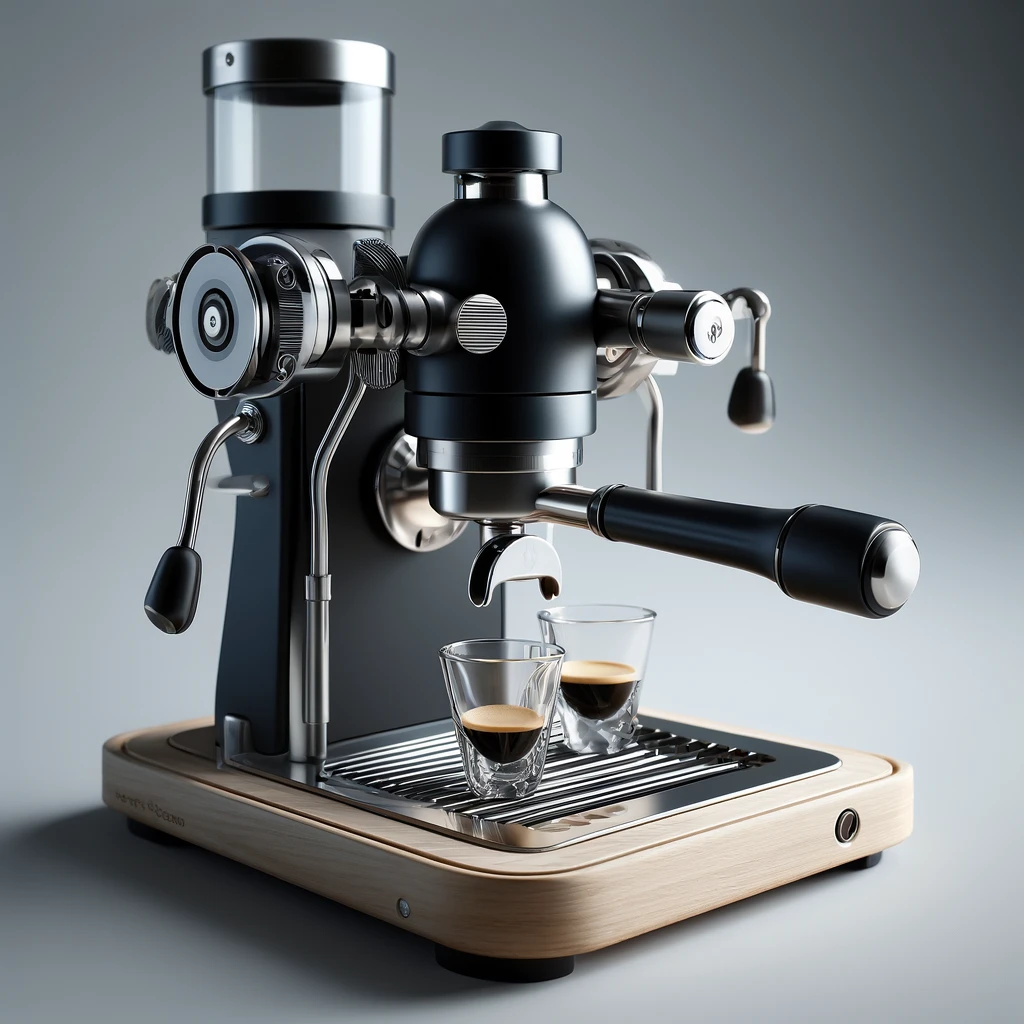
Balancing Act: The World of Semi-Automatic Espresso Machines
So, we’ve talked about manual espresso machines and their appeal for those who love the classic, hands-on approach to espresso making. But what if you want something that offers both control and convenience? That’s where semi-automatic espresso machines come into play.
You’re going to find out about semi-automatic espresso machines which strike a balance between customization and ease of use. Unlike fully manual alternatives, these machines automate certain steps while still allowing you to influence the espresso extraction process.
Choosing a semi-automatic machine could be your sweet spot if you’re eager to be involved in your espresso ritual but don’t want the full workload of a manual version. These machines let you grind the coffee, tamp it, and manage the shot timing, giving you a sense of personal accomplishment with every cup.
Let’s zero in on who should opt for semi-automatic espresso machines. If you enjoy crafting your espresso but appreciate some assistance with the process, these machines are likely your best bet. They are a favorite among budding baristas and those who want to improve their coffee-making skills without the steep learning curve of manual devices.
Related Article – Breville Bambino Plus Espresso Machine Review
Welcome to the ultimate review of the Breville Bambino Plus Espresso Machine. If you’re a coffee aficionado like me, you understand the importance of a reliable espresso machine in crafting that perfect home brew. In this article, we’ll dive deep into the nuances of the Breville Bambino Plus, a machine that’s been making waves in… Read More>>

Maintenance is a facet that cannot be ignored. Regular cleaning and occasional descaling are par for the course with semi-automatics. But don’t worry too much about it; if you can handle a dishwasher, you can handle maintaining one of these machines.
Skill level does play a role. While semi-automatic machines take care of the pressure and temperature, your input is crucial for the grinding, tamping, and shot pulling stages. But remember, it’s about the journey, not just the destination. Don’t hesitate to make a few mistakes — it’s all part of honing your barista skills.
In my opinion, semi-automatic espresso machines provide an enjoyable middle ground. They propel you into the espresso making process while helping guard against some common missteps. If you choose one, learning to master its operation can be a rewarding hobby that pays off with exceptional espresso every time.
Optimal Convenience: A Look at Fully Automatic Espresso Machines
I’m going to take you through the world of fully automatic espresso machines, marvels that make brewing a quality cup as easy as pressing a button. I’ll unpack what these machines are all about and why they might just be the best fit for your coffee routine.
Fully automatic espresso machines are the go-to gadget for coffee enthusiasts seeking a seamless experience. You can think of these machines as your personal barista – grinding, tamping, and extracting the espresso shot all by themselves.
If you want to dive into the features, you’ll see that with fully automatic machines, everything is taken care of. They feature built-in grinders, water filtration systems, and programmable settings to remember your preferences for future brews.
Breville BES870XL Barista Express
The Barista Express by Breville is the perfect machine for coffee lovers who want to create delicious, authentic espresso at home. Using the four keys formula, this machine guarantees great-tasting espresso in less than a minute. With its interchangeable filters and adjustable settings, you can customize your drinks to your own taste. Plus, the integrated grinder ensures that your beans are always fresh. Whether you’re a beginner or a coffee aficionado, the Barista Express will help you make the perfect cup of espresso every time.

You’re going to find out about the convenience these machines offer. They’re particularly suited for busy individuals or those who prefer not to deal with the nuances of pulling the perfect shot manually.
Don’t worry too much about the level of control, though. Some high-end models offer a degree of customization for those who like to experiment, allowing you to tweak settings like temperature, pressure, and shot duration.
The major benefit? Ultimate ease of use. But, this doesn’t mean that quality is compromised. Many fully automatic machines produce shots that rival those of a skilled barista – consistently and quickly. Plus, clean-up is often just as easy as brewing.
So, if you choose a fully automatic machine, remember that while they offer great convenience, they can also come with a heftier price tag and take up more counter space. Assess your budget and kitchen real estate before diving in.
Exploring The World of Espresso FAQ’s
Espresso, a staple in coffee culture, is celebrated for its robust flavor and unique preparation method. For enthusiasts and newcomers alike, understanding espresso’s background, cultural significance, and distinctive characteristics can enhance appreciation for this beloved beverage. Below, we address some key questions to help deepen your knowledge of espresso.
What Is the Theory of Espresso?

The theory of espresso revolves around extracting the most flavor in the shortest amount of time using pressure. Espresso is made by forcing hot water through finely-ground coffee beans at high pressure, typically between 8 and 10 bars. This process, which takes about 20-30 seconds, produces a concentrated shot of coffee topped with a layer of crema (a creamy foam). The goal is to capture the coffee’s full range of flavors and aromas, resulting in a rich, bold shot that is the base for many coffee drinks.
What Country Is Known for Espresso?

Espresso originates from Italy, where it was perfected and popularized in the early 20th century. The term u0022espressou0022 itself comes from Italian, meaning u0022expressedu0022 or u0022pressed out,u0022 referring to the method of espresso preparation. Italy remains synonymous with espresso, with the drink being a fundamental part of Italian culture and daily life. Italian espresso is known for its high quality, meticulous brewing technique, and its role as a social beverage often enjoyed at local cafés throughout the day.
Why Is Espresso So Powerful?
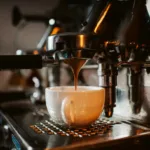
Espresso is powerful due to its high concentration of flavors, caffeine, and solids in a small volume. The brewing process, which involves passing hot water through compacted coffee grounds at pressure, extracts a dense, rich coffee solution. This results in a stronger brew than other methods, both in flavor and in caffeine content per ounce. The intensity is also a sensory experience, where the aroma, mouthfeel, and taste contribute to its powerful impact.
By exploring these facets of espresso, you can appreciate not only the drink itself but also the culture and craftsmanship that surround it. Whether enjoyed alone as a quick shot or savored in a creamy latte, espresso offers a complex and invigorating experience for coffee lovers everywhere.
Capsule Culture: The Rise of Pod Espresso Machines and Who They’re Meant For
related article – Revitalize Your Mornings With The Power Of A Coffee Pod Machine
Are you tired of the same old boring cup of coffee in the morning? Do you find yourself staring blankly at the Coffee Pod Machine, wondering how to add some excitement to your daily caffeine fix? Well, fear not, my fellow coffee lovers, because I’ve got some informative tips to help you take your pod … Check Out Our Full Article Here

When it comes to convenience and quick clean-up, pod espresso machines lead the pack. Pod machines, armed with the simplicity of single-use capsules, offer the ultimate straightforward experience in pulling a shot of espresso. They have become a symbol of efficiency in our fast-paced world.
But deciding if a pod machine is the right fit for you calls for a closer look. Factor in the cost per cup, the environmental perspective—given the waste created by single-use pods—and the variety of flavors and brands available. It’s crucial to understand that while these machines score high on convenience, they may not always reach the summit of espresso quality known to manual or more hands-on machines.
Are you someone who values speed and minimal mess over the craft and ritual of espresso making? Are pod machines the future for the everyday coffee enthusiast, or will they co-exist with traditional methods? It’s up to individual preference, work-life balance needs, and environmental considerations.
In essence, pod espresso machines cater to those seeking a quick, clean, and no-fuss approach to their daily caffeine routine. However, for individuals passionate about the artistry and flavor nuances of a meticulously crafted espresso, the pod system might not satisfy that hands-on coffee journey.
In a family of coffee addicts, Mark started to appreciate the drink fairly late – around 35 years old.
His love for java began when he wrote articles on it and bought his first machine after which everything else just fell into place; there are now five machines in our home!
We start every day with an early morning cuppa coffee because what could better help set your mind right than some freshly brewed hot Coffee?
When Marks not writing or thinking about coffee, he can be found sipping on a cup of black gold at one of his favorite local joints.


